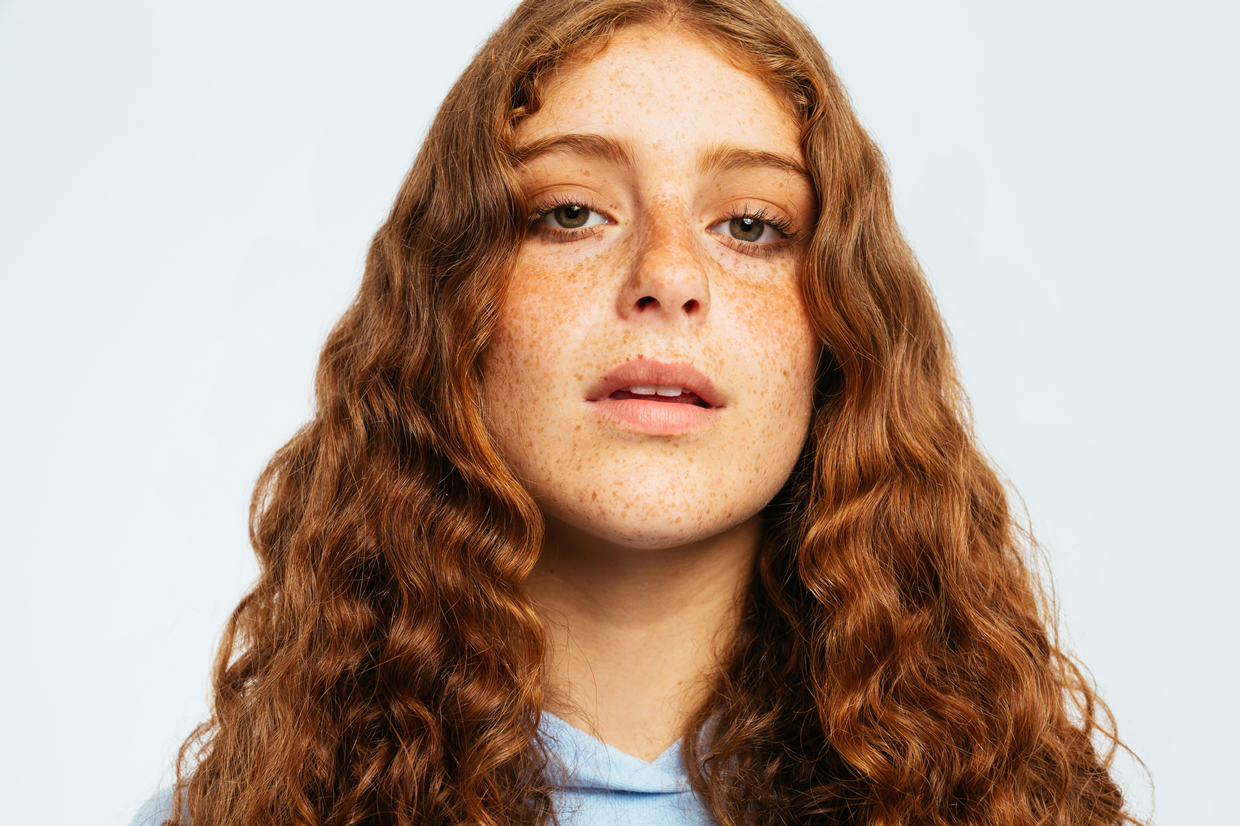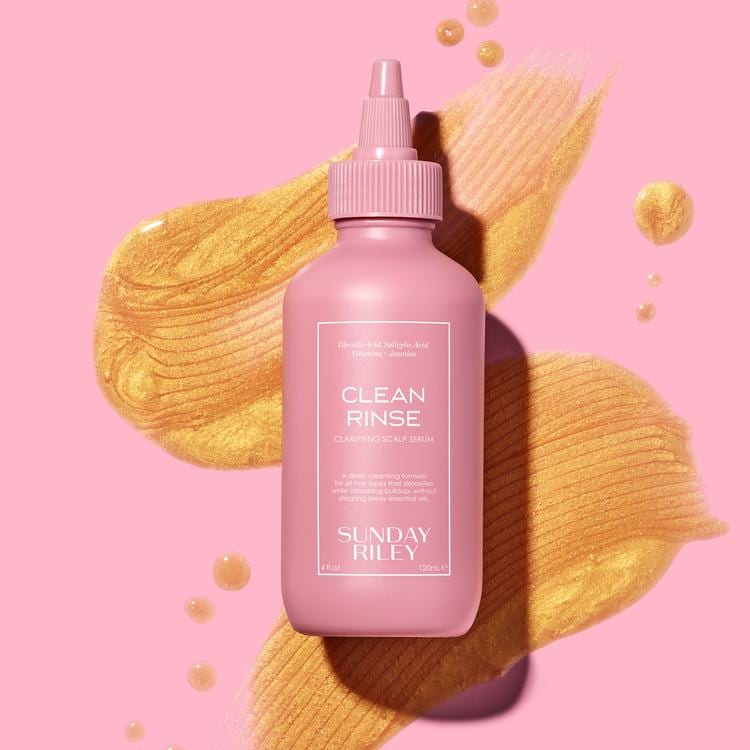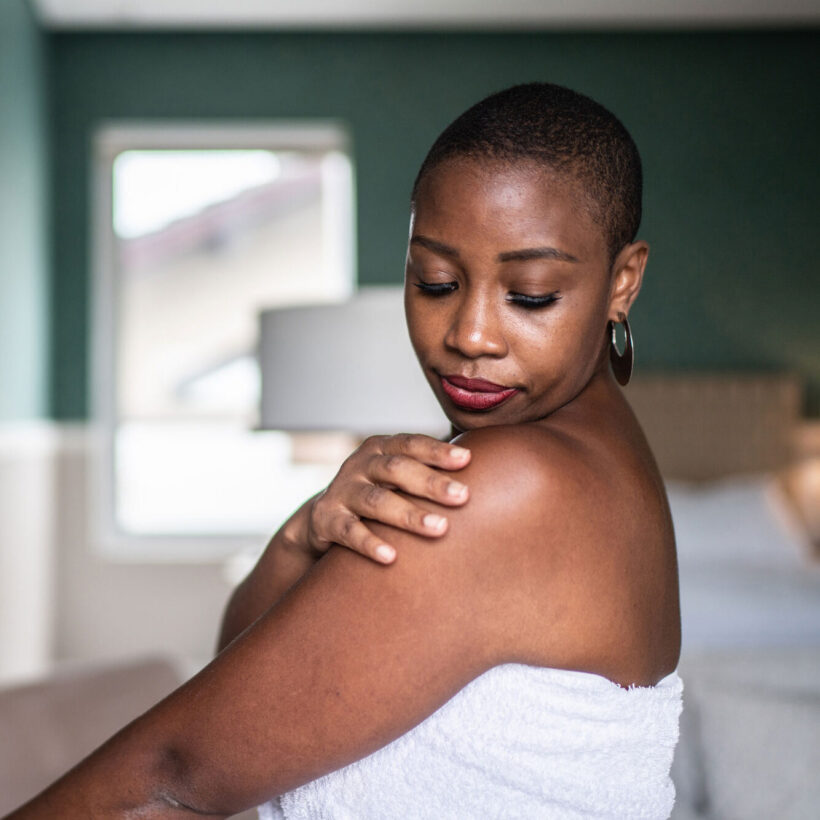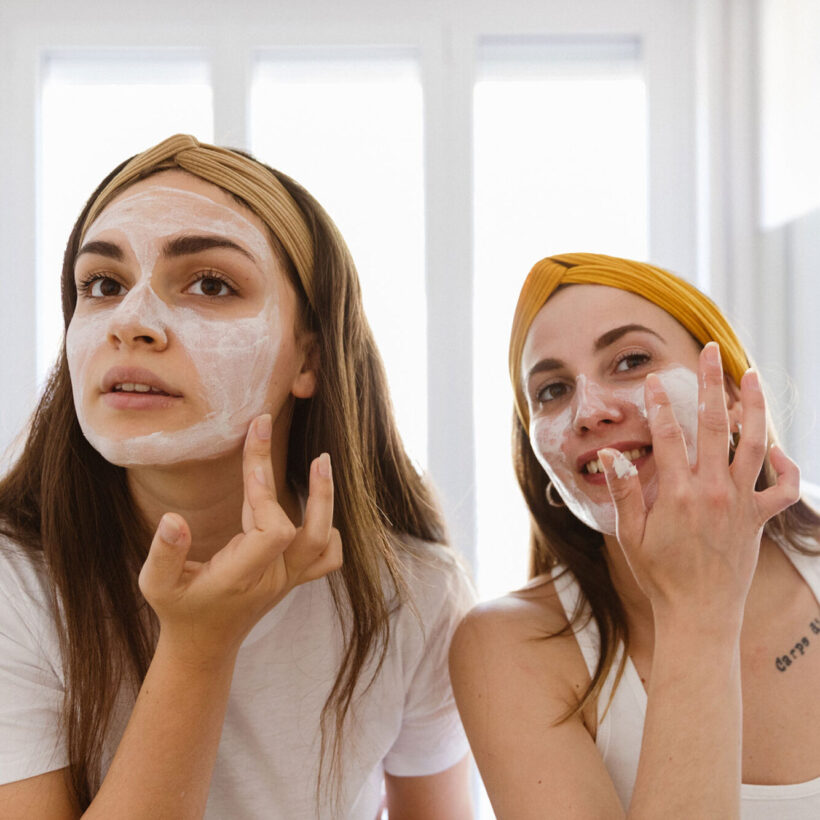If we had a dime for every sentence that began with “Thanks to TikTok….”
But in all seriousness, in the past few months, the app has made hundreds of users realize that their straight, frizzy hair might actually be curly hair. It all started with one user (@danielllebellle) who shared her journey to discovering her curls: After washing her hair with curl-enhancing shampoo, applying a curl serum, and plopping (the popular curly hair trick of drying hair with a T-shirt to avoid frizz), she revealed her newfound curls.
@thedaniellelife😱Wait ‘til the end I- #curls #miraclecurl #curlygirlmethod♬ original sound – Danielle Elizabeth
If your hair doesn’t have an obvious curl pattern, it’s common to resort to heat styling as a method of taming any frizz. Now, because of videos like Danielle’s, more and more people are motivated to unlock their curl potential. Frizz could be an indicator that curly hair could be hiding underneath. “If there is any sort of wave pattern in the hair when it’s wet, then chances are you’ve got curly hair,” Janine Jarman, curl expert, founder of Hairroin Salon and the creator behind Curl Cult. “You most likely need to encourage curls further.”
“I recently did a day in a salon with editors with all different hair types, and it was incredible to see their reactions when they saw their hair actually curled after years of thinking their hair was ‘unruly’ or ‘just frizzy,’” says hairstylist Irinel de León. “There’s always potential. It’s just about training your strands and using the right techniques.”
Below, our experts walk us through figuring out if your seemingly straight or wavy hair is secretly masking gorgeous curls.
Find products that add moisture.
“Naturally frizzy hair is often due to a lack of moisture,” says Jarman. “Moisture-rich, curl-supportive products and techniques can coach it into a more defined shape.” The best curly hair routine starts with shampoos and conditions with hydrating ingredients specifically formulated for curly hair. Ouidad Defrizzing Shampoo, for instance, is a sulfate-free formula that locks in moisture with emollients like shea butter and murumuru butter as well as ceramides that smooth out the surface of the hair. The Curl Cult Revive Hydrating Conditioner is formulated with PisumProtex™ technology that infuses pea proteins that are rich in hydrating amino acids to bring out the shine and strengthen curls.
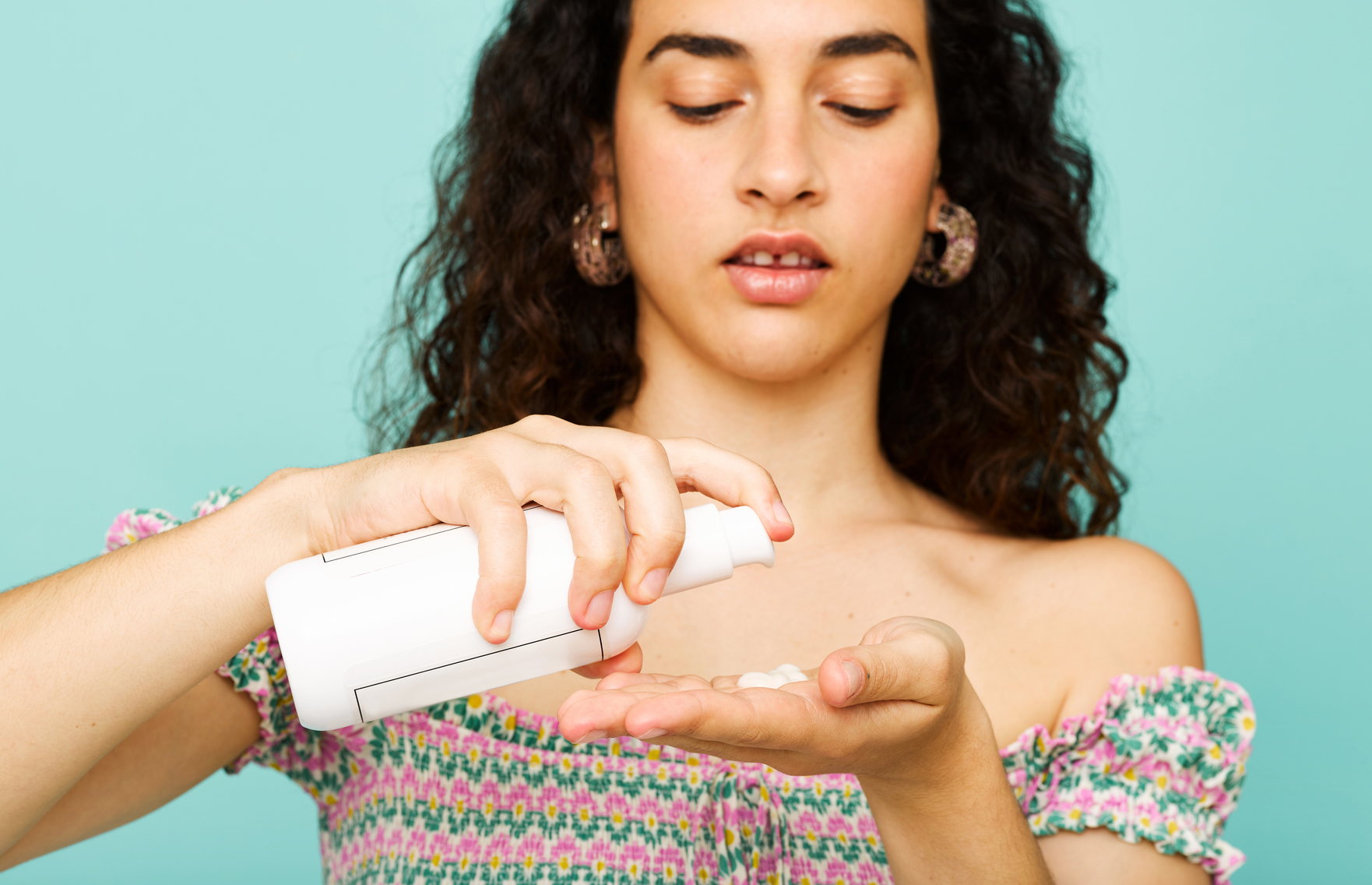
Avoid ingredients that weigh hair down.
Speaking of sulfates, as you’re getting more familiar with your hair care formulas, there are certain ingredients to avoid. Jarman suggests products free of sulfates, parabens, alcohol, and silicones, as this helps avoid the buildup that weighs down the hair. “The biggest struggle for my curly hair clients was not being able to find the right products to keep their curls hydrated and in shape,” says Jarman. “But, when you have the right products and routine, your curly hair will practically style itself,” she says.
Avoid overwashing hair.
To keep frizz at bay, limit washing hair daily. “Curly hair needs moisture to thrive, and overly cleansing your hair resets natural scalp oils that help keep hair bouncy and soft.” A general rule of thumb is to lather up no more than four times a week if you have looser curls. Coily hair or tighter hair types can opt to co-wash once a week with a regular shampoo session every month.
If you’re not sure what your schedule should be, if your curls are feeling thirsty and dry, try shampooing less often. This also means you need to amp up your scalp care game: “Because of less frequent hair washing, some scalps can get buildup, which if left untreated, can cause flakes and even hair loss,” says Jarman. On wash days, exfoliate your scalp with Sunday Riley Clean Rinse Clarifying Scalp Serum with Niacinamide, which features an AHA/BHA-infused formula designed to remove excess oil, dead skin, and buildup. No matter your hair type, “a healthy scalp is imperative for healthy hair,” says Jarman.
Find the right cut.
If you’re looking to maintain your new curly look, the right haircut is crucial: “Curly cuts need a more artistic approach and to be cut in its natural dried state, to assist with weight distribution and curl formations,” says Jarman. “Using a C-shape carving technique to sculpt out layers and bulk can also help with the natural growth and texture of how it will fall and stack up.” Feel free to bring photos for inspiration, but it’s important to chat with your hairstylist to help determine what the best cut is for your face shape, lifestyle, and newly discovered hair type.
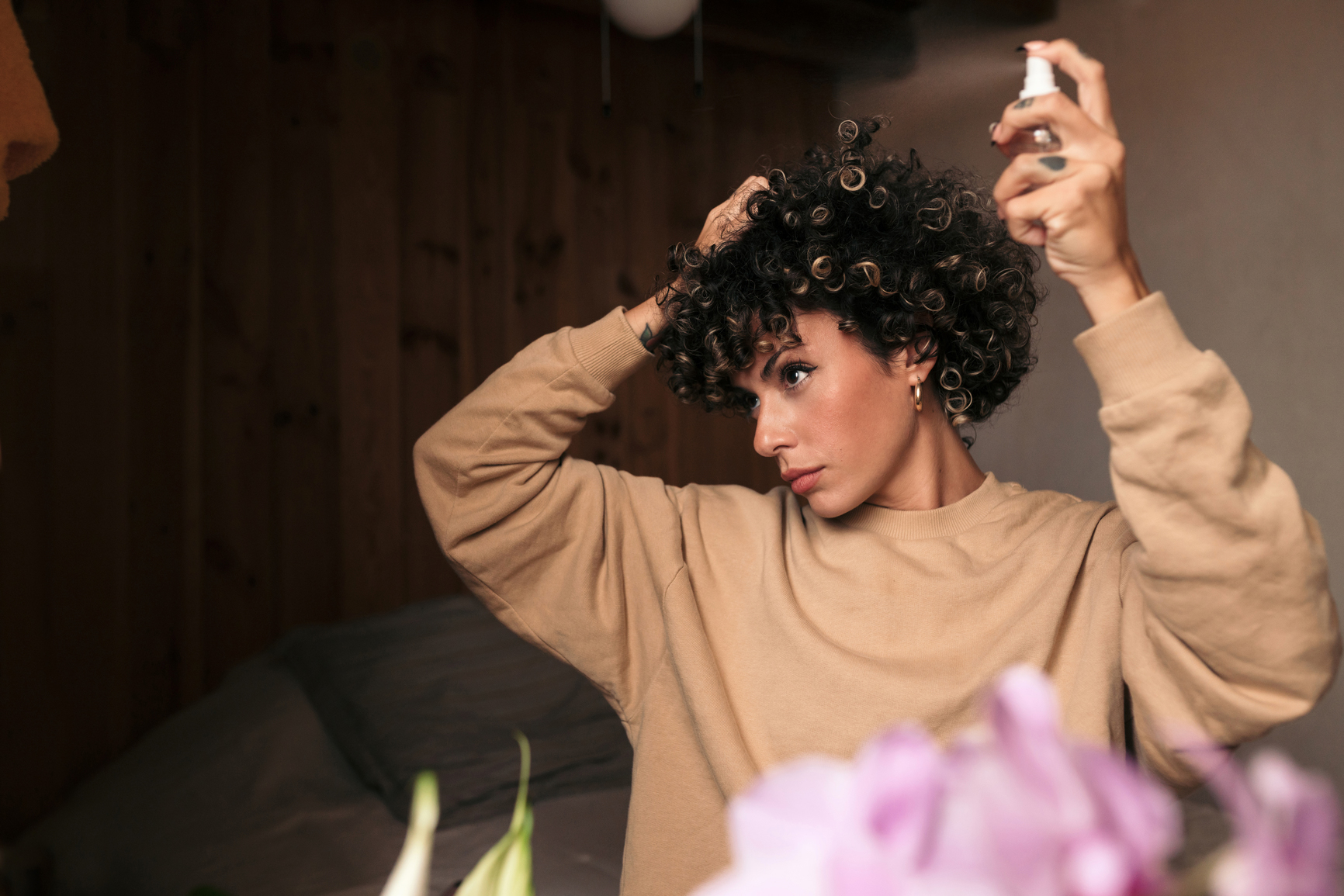
Style hair strategically.
After your moisture-rich shampoo and conditioner session in the shower, use a wide-tooth detangling comb (rather than a brush), so you don’t disrupt your curls. Apply products when your hair is soaking wet. On non-wash days, spritzing hair with water before styling can do the trick. “Ensuring your hair is very wet when applying makes sure you’re getting frizz-free waves, curls, or coils since it helps the hair clump together and create definition,” says hairstylist Irinel de León. For fine hair, she recommends Ouidad Advanced Climate Control Gel, as it creates hold. “Apply a quarter-sized amount to each side of your head in raking motions,” says de León. For thicker or drier textures, try the Ouidad Advanced Climate Control Cream followed by the gel. Then, scrunch the hair with a microfiber towel or a cotton T-shirt to air-dry hair as bath towels and blow-drying can create frizz. Avoid rubbing your hair with your towel too aggressively for this reason.
We only recommend products we have independently researched, tested, and loved. If you purchase a product found through our links, Sunday Edit may earn an affiliate commission.
